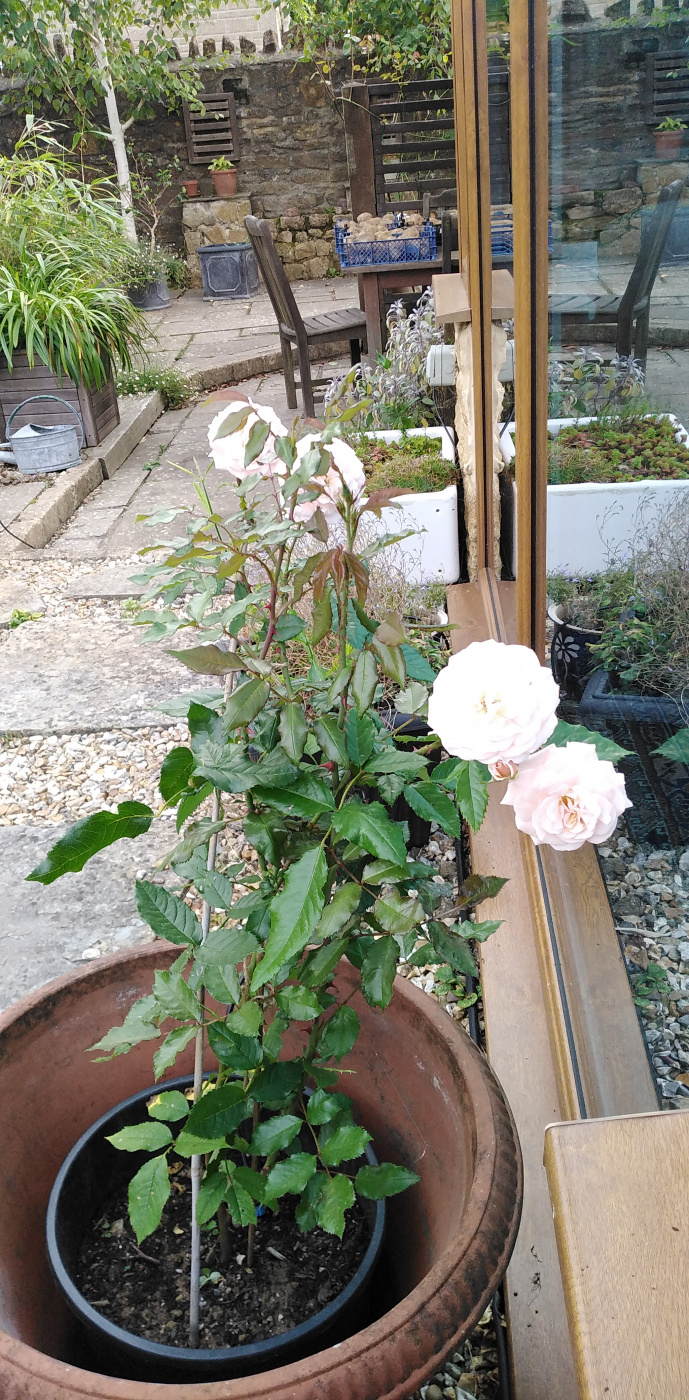This Forum will close on Wednesday 27 March, 2024. Please refer to the announcement on the Discussions page for further detail.
Roses from cuttings
Hi all, having successfully grown cuttings of several different roses I wondered if I should expect to see any noticeable between my own root cuttings and the original grafted roses. I know that fruit trees are grafted onto different rootstock for specific reason and I am curious to know if you have a similar one for roses.
grown cuttings of several different roses I wondered if I should expect to see any noticeable between my own root cuttings and the original grafted roses. I know that fruit trees are grafted onto different rootstock for specific reason and I am curious to know if you have a similar one for roses.
So far I have been successful with Sweet Honey (pictured above), Gertrude Jekyll and Golden Showers. The ones I failed with I assumed that it was something I that I did but maybe some are easier than others.
Any input would be appreciated, I 'm sure one of you clever people can enlighten me as to why grafting should be the norm in commercially produced roses.
 grown cuttings of several different roses I wondered if I should expect to see any noticeable between my own root cuttings and the original grafted roses. I know that fruit trees are grafted onto different rootstock for specific reason and I am curious to know if you have a similar one for roses.
grown cuttings of several different roses I wondered if I should expect to see any noticeable between my own root cuttings and the original grafted roses. I know that fruit trees are grafted onto different rootstock for specific reason and I am curious to know if you have a similar one for roses.So far I have been successful with Sweet Honey (pictured above), Gertrude Jekyll and Golden Showers. The ones I failed with I assumed that it was something I that I did but maybe some are easier than others.
Any input would be appreciated, I 'm sure one of you clever people can enlighten me as to why grafting should be the norm in commercially produced roses.
1
Posts
https://www.google.com/amp/s/amp.theguardian.com/lifeandstyle/2013/nov/29/gardens-rose-cuttings-hardwood
I have high hopes of my own-root Tess of the d'Urbervilles. It has bloomed far better than my grafted one, which might end up binned his autumn if it's not careful. Your Sweet Honey also looks great.
I shall be taking more and hoping for better results..
Grafting roses is the fastest and most cost-effective way for rose nurseries to produce a large number of the same rose with the least amount of cutting material. They tend to be more uniform, have more vigour and establish faster grafted, so the buyer is happy too. The rootstock used throughout Europe and the UK is laxa, which also has the benefit of being more tolerant of alkaline soils.
Now is a great time to take hardwood rose cuttings. This is what I do: the cuttings taken now should be 10-12" long. Put them either directly into a sandy mix nursery bed or what I usually do is put them in deep pots filled with a stony sandy mix. Sometimes if I have some I will use hormone rooting powder but if you don't have any try anyway. Keep the pots moist now until autumn really sets in; don't let them dry out in the current hot weather. Then forget about them over the winter and by late spring some, if not most will have rooted. Then pot them on, maybe two or three times and the following year they should be ready for planting in their permanent location.
I find this works with most varieties I've tried but with some they just don't take.
Gardening in Central Norfolk on improved gritty moraine over chalk ... free-draining.